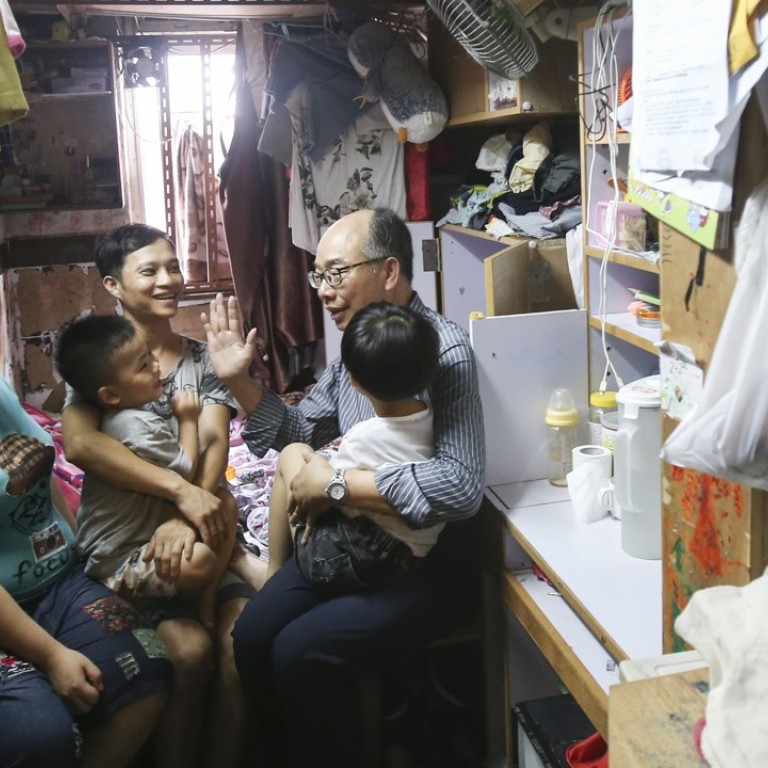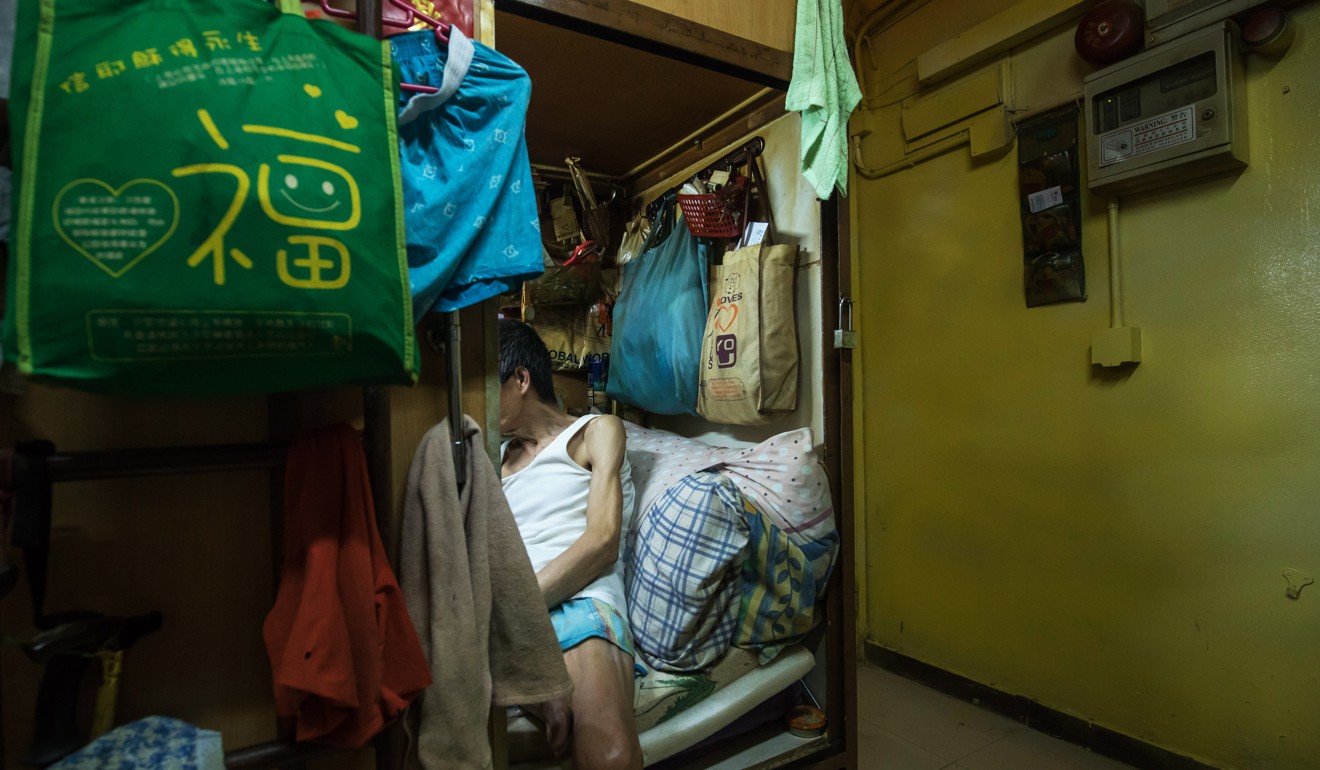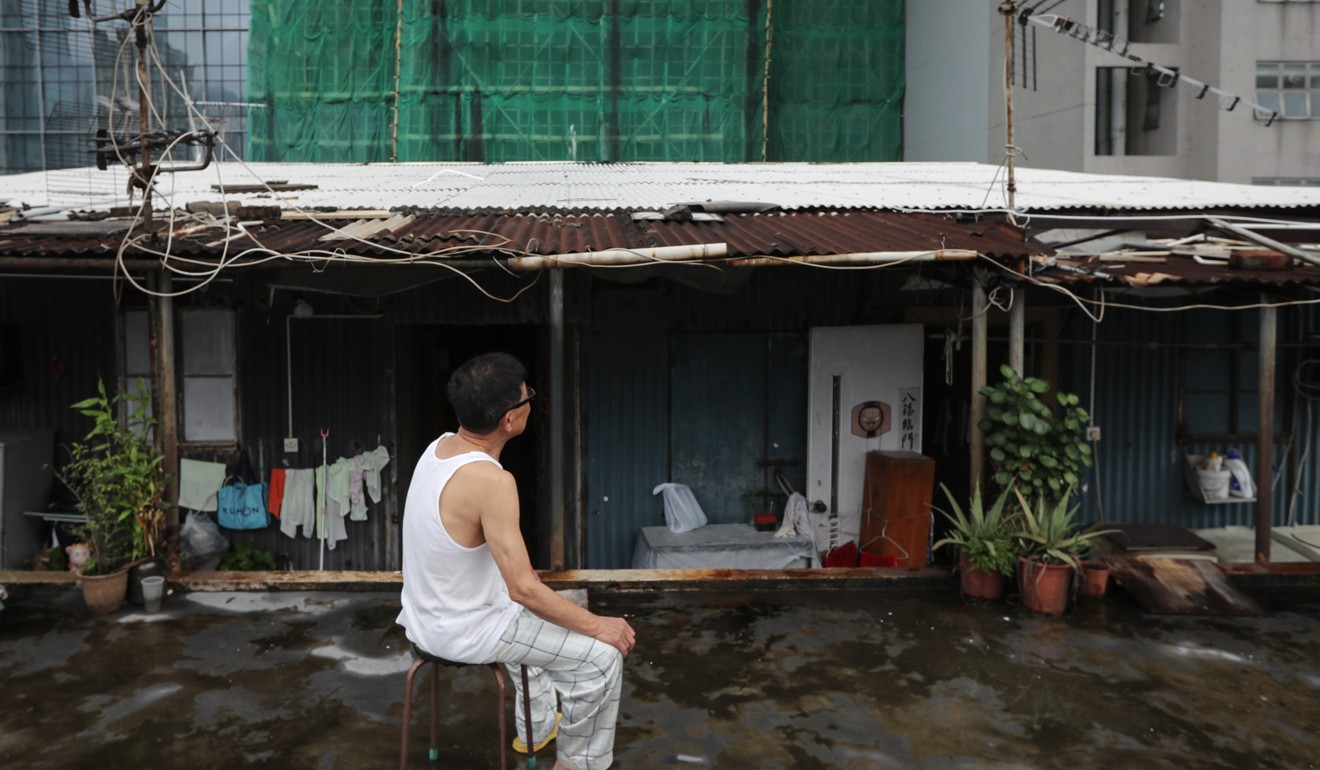
Up to 500 safer subdivided flats for Hong Kong’s needy under HK$100m plan
The scheme will act as a short term measure to manage the plight of poorest on the public housing waiting list
As many as 500 government-approved subdivided rental flats in Hong Kong could be available this year under a HK$100 million housing plan to ease the plight of needy families, the Post has learned.
Based on initial proposals, social welfare groups will be enlisted to operate such flats, with funding to come from both the Community Chest and the Social Innovation and Entrepreneurship Development Fund.
The government has also approached the Council of Social Service to line up interested welfare groups or social enterprises to apply for the money to convert the flats into partitioned units.

It is understood that tenants can expect to pay “at cost” rentals – about half the prevailing market rate. The rent for an existing subdivided flat of about 80 sq ft in Sham Shui Po is about HK$4,000 a month.
Based on an average calculation of about HK$200,000 to HK$250,000 to renovate or convert an apartment into subdivided units, the HK$100 million funding could be enough to partition 400 to 500 flats.
Welfare groups will give the highest priority to tenants who are in greatest need.
Council of Social Service chief executive Chua Hoi-wai said it would hold a briefing on Wednesday to introduce the programme to non-profit organisations and invite them to run the flats.
But he said the role of his group had not been finalised.
Chua said a landlord had earlier handed over 14 units in Mong Kok to the council for a similar project idea, even before such plans had been mooted by the government.
He said many more units were offered to them after officials spoke in public.
But Chua said they would turn down some flats which had been renovated as illegal subdivided housing.
The Community Chest did not comment directly about its role in the scheme, saying only that it was open to new project ideas.
Chan suggested that those on the public housing waiting list consider more hygienic, safer and relatively more spacious subdivided units that were run by non-profit organisations as a short term measure to ease their plight.
While he acknowledged that the ultimate solution was to build more public housing flats quickly, he said the government should not constrain itself to “one path or one policy”.
Ho Hei-wah, director of human rights advocacy group Society for Community Organisation, hailed the idea.

“Even a small step may have a big impact on affected residents,” he said, adding interim measures did not negate long-term policy.
Ho said he was not too worried about a shortage of landlords willing to rent their flats to welfare groups to operate government-approved subdivided housing.
“Our experience is that there are many old landlords who do not know how to manage their aged units, or simply leave their properties idle without proper maintenance,” Ho said.
“If the government can fund the welfare groups to do the renovation or conversion, it will result in a win-win situation. The landlords can get their properties upgraded, get rents, and needy families can get better accommodation.”
But Ho said he hoped follow-up services would also be offered to the needy families after they move in.
“For example, we should teach them how to pack or store their belongings or make the best use of furniture. Otherwise, it is only to move the tenants from one overcrowded subdivided flat to another equally congested, albeit slightly more spacious one.”
Simon Yau Yung, an associate professor in housing policy and management at City University, said it was necessary for the government to set a minimum living area per capita for residents who will live in the pre-approved flats.
“The government needs to set a bottom line for occupancy standards, which has also been done in Singapore and Beijing,” Yau said. “When there is no other choice, people can live in smaller flats, but at the same time what is key is that it is safe and hygienic,” he said.
While government figures showed residents in subdivided flats had an average area of 62 sq ft in 2015, many were living in “coffin homes” as small as 15 sq ft – or the size of a single-bed mattress.
Housing Authority guidelines stipulate that public housing residents should have at least 75 sq ft of internal living space per person. In Singapore, the standard is at least 100 sq ft.
Yau, who worked in the Buildings Department, said the government also had to clarify the type of renovations and maintenance work needing pre-approval from the department.
The Hong Kong Institute of Surveyors urged the government to come up with interim design and construction requirements for partitions, drainage, fire safety and ventilation for such flats.
Additional reporting by Kimmy Chung


